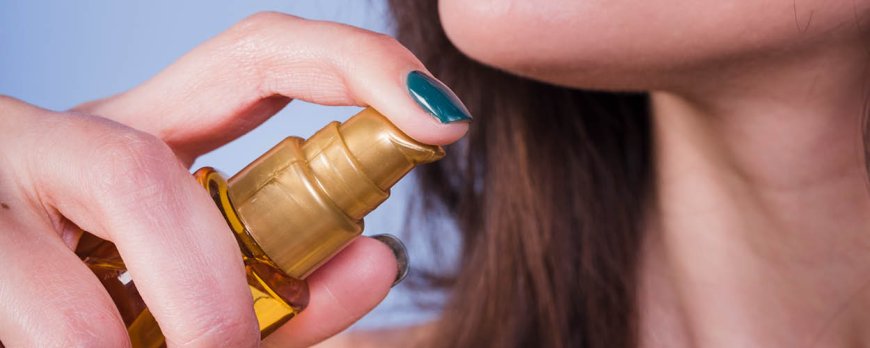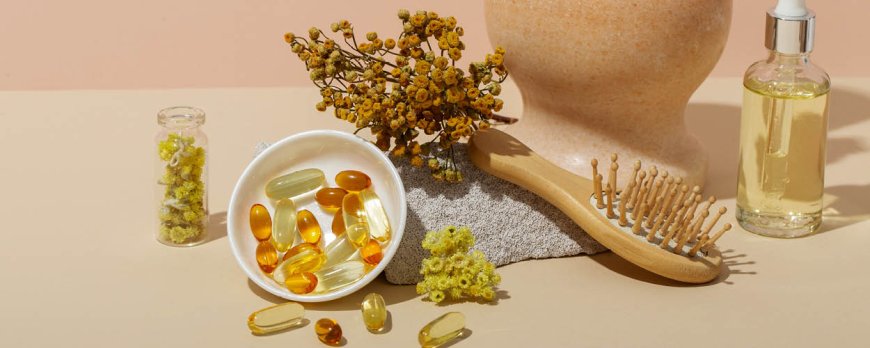Can Hair Grow 9 Inches in a Year?
Uncover the truth about hair growth: Can hair grow 9 inches in a year? Discover scientific insights, figures, and factors influencing hair's growth rate.

Can Hair Grow 9 Inches in a Year?
Hair growth is a fascinating process that is influenced by various factors, but can hair really grow 9 inches in just one year? Let's delve into the myths and facts surrounding hair growth and explore the factors that can influence its rate.
Key Takeaways:
- The average rate of hair growth is about six inches per year.
- Hair growth occurs in cycles, with the active phase called anagen lasting 2 to 7 years.
- During the anagen phase, hair can grow up to half an inch per month.
- Protective hairstyles and a healthy hair care routine can promote hair growth.
- Avoiding daily washing, harsh products, and heat styling tools, as well as trimming split ends regularly, can prevent breakage and support healthy growth.
Understanding the Hair Growth Cycle
To understand hair growth and its potential to reach 9 inches in a year, it is essential to grasp the intricacies of the hair growth cycle. Hair growth occurs in cycles that consist of three phases: anagen, catagen, and telogen.
The Anagen Phase
During the anagen phase, which lasts 2 to 7 years, the hair follicles are actively growing. This is the phase where hair can grow up to half an inch per month, contributing to the overall length of the hair. The length of the anagen phase varies among individuals and plays a significant role in determining the potential length of the hair.
The Catagen and Telogen Phases
Following the anagen phase, the catagen phase begins. This phase is a transitional period that lasts for a few weeks. During this time, the hair follicles shrink and detach from the blood supply, leading to the end of active growth. The final phase is the telogen phase, also known as the resting phase. In this phase, the hair follicles remain dormant for around 1 to 4 months before shedding and being replaced by new hair.
It is crucial to note that not all hairs are in the same phase at the same time, meaning that not all hairs are actively growing. This is why it may seem like hair growth is slower than expected. Additionally, factors such as genetics, age, overall health, and environmental factors can influence the length and duration of each phase, thereby affecting hair growth.
By understanding the hair growth cycle and the factors that influence it, individuals can adopt proper hair care practices and make informed choices to support healthy hair growth. Following a consistent hair care routine, avoiding excessive heat and chemical treatments, and maintaining a balanced diet can all contribute to optimal hair growth. Additionally, practicing protective styling and regular trims can help minimize breakage and damage, allowing hair to grow longer and healthier. While a growth rate of 9 inches in a year may be unlikely for some individuals, implementing these strategies can lead to noticeable improvements in hair length and overall hair health.
The Average Rate of Hair Growth

Before we delve into the possibility of achieving 9 inches of hair growth in a year, let's first establish what the average rate of hair growth actually is. On average, hair grows at a rate of about six inches per year. However, it's important to note that this growth may not be easily visible, as the ends of the hair can become damaged and break off.
Hair growth occurs in cycles, with the active phase called anagen lasting 2 to 7 years. During this phase, hair can grow up to half an inch per month. However, it's essential to understand that the hair growth cycle also includes transitional and resting phases called catagen and telogen, respectively. These phases can vary in duration and may affect the overall growth rate of hair.
To promote hair growth and minimize breakage, there are several factors to consider. It is important to avoid washing hair every day, as excessive washing can strip the hair of its natural oils and lead to dryness and damage. Limiting the use of harsh products and heat styling tools is also crucial, as these can weaken the hair and contribute to breakage.
- Deep conditioning regularly can help keep the hair nourished and moisturized, supporting healthy growth.
- Trimming split ends every six weeks is essential to prevent further damage and breakage.
- Maintaining a balanced diet and staying hydrated are also important for overall hair health and growth.
Furthermore, protective styles such as braids or twists can help protect hair from external stressors and minimize breakage. Following a consistent hair care routine and avoiding chemical treatments can also contribute to healthier hair growth. By adopting these practices, individuals can support their hair's natural growth potential and maintain its overall health.
Factors Influencing Hair Growth
It's important to recognize that hair growth is influenced by a range of factors beyond just the passage of time. Let's explore the key factors that can impact the growth rate of your hair.
1. Genetics: Your genetic makeup plays a significant role in determining your hair growth rate. Some individuals are genetically predisposed to have faster hair growth, while others may have slower growth patterns.
2. Age: Hair growth tends to be more robust during younger years and gradually slows down as you age. This is because hair follicles become less active over time, resulting in a decrease in the growth rate.
3. Health and Nutrition: Proper nutrition is essential for healthy hair growth. A balanced diet rich in vitamins, minerals, and proteins can support the growth of strong and vibrant hair. Additionally, factors like underlying health conditions, hormonal imbalances, and stress levels can also impact hair growth.
4. Environmental Factors: External elements, such as exposure to harsh weather conditions, pollution, and excess heat or humidity, can affect the health of your hair and impede growth. It's important to protect your hair from these factors to maintain optimal growth rates.
Summary:
- Genetics play a role in determining hair growth rate.
- Hair growth tends to slow down with age.
- Nutrition and overall health can impact hair growth.
- Environmental factors can influence hair growth.
Understanding the factors that influence hair growth can help you make informed decisions about your hair care routine. By adopting a healthy lifestyle, protecting your hair from damage, and addressing any underlying health issues, you can support optimal hair growth and maintain luscious locks.

Tips for Promoting Faster Hair Growth
If you're looking to maximize your hair growth potential, there are several natural and healthy approaches you can incorporate into your routine. By following these tips, you can help foster an environment that supports faster and healthier hair growth.
Avoid over-washing and harsh products
- Washing your hair every day can strip it of its natural oils, which are essential for healthy hair growth. Aim to wash your hair 2-3 times a week to maintain a balanced moisture level.
- When choosing hair care products, opt for gentle and sulfate-free formulas. Harsh chemicals can damage the hair follicles and impede growth.
Promote scalp health
- Your scalp plays a crucial role in hair growth, so keeping it healthy is essential. Regularly massage your scalp to stimulate blood flow and promote circulation, which can encourage hair growth.
- Try incorporating a scalp treatment into your routine, such as a natural oil or a clarifying shampoo to remove product buildup and maintain a clean and healthy scalp environment.
Provide nourishment through diet and hydration
- A balanced diet rich in vitamins and minerals, such as biotin, vitamin E, and iron, can provide the essential nutrients your hair needs to grow longer and stronger.
- Stay hydrated by drinking an adequate amount of water throughout the day. Hydration is crucial for maintaining hair health and promoting growth.
- Consider incorporating hair growth supplements into your routine after consulting with a healthcare professional.
Protect your hair
- Avoid excessive heat styling and limit the use of heating tools, as they can cause damage and breakage. When using heat, always apply a heat protectant spray.
- Regularly trim your hair to prevent split ends from traveling up the hair shaft and causing breakage.
- Consider adopting protective hairstyles, such as braids or twists, to minimize manipulation and reduce the risk of breakage.
By incorporating these tips into your hair care routine, you can create an environment that promotes faster hair growth. Remember, everyone's hair growth journey is unique, so be patient and consistent in your efforts. With time and care, you can achieve the healthy and lustrous hair you desire.

Maintaining a Healthy Hair Care Routine
Consistency and care are key when it comes to maintaining healthy hair growth. Let's explore the essential components of a proper hair care routine.
- Washing: Avoid washing your hair every day, as this can strip the scalp of its natural oils and disrupt the hair growth cycle. Aim to wash your hair 2-3 times a week with a gentle shampoo.
- Conditioning: After washing, be sure to use a conditioner to hydrate and nourish your hair. Focus on the ends, where damage is more likely to occur. Leave the conditioner on for a few minutes before rinsing it out.
- Deep Conditioning: Deep conditioning treatments once a week can help restore moisture and strengthen the hair. Look for products that contain ingredients like argan oil, shea butter, or keratin for added hydration and repair.
- Trimming: Regular trims every six to eight weeks can prevent split ends from traveling up the hair shaft and causing further damage. Trimming the ends of your hair will help it look healthier and promote overall growth.
- Heat Styling: Limit the use of heat styling tools such as flat irons and curling irons, as excessive heat can weaken the hair and cause breakage. If you must use heat, always apply a heat protectant spray beforehand.
- Diet and Hydration: A balanced diet rich in vitamins and minerals is essential for healthy hair growth. Include foods high in protein, omega-3 fatty acids, and vitamins like A, C, and E. Additionally, stay hydrated by drinking plenty of water to nourish your hair from within.
Protective Styles for Hair Growth
Incorporating protective styles into your hair care routine can help promote growth by reducing breakage and damage. Here are some popular protective styles:
- Braids: Braiding your hair can help minimize manipulation and protect the ends. Opt for styles like box braids, cornrows, or French braids.
- Twists: Twisting your hair, whether it's individual twists or flat twists, can provide a protective shield against daily wear and tear.
- Buns and Updos: Wearing your hair in a loose bun or an updo can keep the ends tucked away and prevent friction with clothing.
- Wigs and Extensions: Using wigs or extensions can help protect your natural hair by providing a barrier and reducing the need for constant styling.
By following a consistent and well-rounded hair care routine that includes washing, conditioning, deep conditioning, trimming, and protecting your hair, you can support healthy hair growth and maintain the overall health of your hair.
Debunking Hair Growth Myths
With so much information available about hair growth, it's important to separate fact from fiction. Let's debunk some common myths and reveal the truth about hair growth.
Myth 1: Cutting hair makes it grow faster
Contrary to popular belief, cutting your hair does not make it grow faster. The rate at which your hair grows is determined by factors such as genetics, age, and overall health. While regular trims can help maintain healthy hair by preventing split ends, they do not affect the actual rate of growth.
Myth 2: Washing hair every day promotes hair growth
Another myth surrounding hair growth is that washing it every day stimulates the scalp and promotes faster growth. However, washing your hair too frequently can actually strip it of its natural oils and cause dryness and damage. It is recommended to wash your hair every other day or a few times a week, depending on your hair type and personal preference.
Myth 3: Using certain products can make hair grow faster
There are countless hair growth products available on the market claiming to accelerate hair growth. While some of these products may improve the overall health of your hair, there is no scientific evidence to support the claim that they can significantly increase the rate of growth. It's important to be wary of false promises and focus on maintaining a healthy hair care routine instead.
Myth 4: Brushing hair vigorously promotes growth
Sometimes it is said that brushing your hair vigorously can stimulate the scalp and increase blood flow, leading to faster hair growth. However, excessive brushing can actually cause hair breakage and damage. It is best to use a wide-toothed comb or a brush with soft bristles to gently detangle your hair and avoid unnecessary stress on the strands.
Myth 5: Hair growth is solely determined by external factors
While external factors such as diet, lifestyle, and hair care practices can influence hair growth, it is important to remember that genetics play a significant role as well. Everyone has a unique hair growth cycle, and some individuals may naturally have faster or slower hair growth rates. It's essential to focus on maintaining a healthy overall lifestyle rather than relying solely on external treatments for hair growth.

Protective Styles for Hair Growth
One effective way to support healthy hair growth is through the use of protective styles. Let's explore how these hairstyles can contribute to achieving longer hair.
Protective styles are hairstyles that keep the ends of the hair tucked away and protected from daily manipulation, environmental damage, and excessive heat styling. By minimizing breakage and reducing damage, these styles can help retain length and promote healthier hair growth.
Braids and Twists
Braids and twists are popular protective styles that can be worn in a variety of lengths, thicknesses, and designs. These styles help to distribute tension evenly across the hair, preventing excessive stress on individual strands. They also protect the ends of the hair from rubbing against clothing or other surfaces, reducing the chances of breakage.
Updos and Buns
Wearing the hair in updos or buns is another way to protect the hair and encourage growth. By keeping the hair secured and tucked away, updos and buns minimize friction and reduce the risk of damage from external factors. They also help to maintain moisture in the hair, preventing dryness and breakage.
When choosing a protective style, it is important to consider your hair type, length, and desired level of maintenance. Additionally, it is crucial to avoid styles that are too tight or pull on the hair excessively, as this can lead to hair loss or damage.
By incorporating protective styles into your hair care routine, along with other healthy practices such as regular deep conditioning, limited use of heat styling tools, and a balanced diet, you can support optimal hair growth and achieve longer, healthier hair.
Conclusion
Understanding the intricacies of hair growth and implementing effective strategies can help individuals achieve their desired hair length and promote overall hair health. While it is a common myth that hair can grow 9 inches in a year, the reality is that the average rate of hair growth is about six inches per year. However, it is important to note that this growth may not always be easily visible as the ends of the hair can become damaged and break off.
Hair growth occurs in cycles, with the active phase called anagen lasting 2 to 7 years. During this phase, hair can grow up to half an inch per month. The hair growth cycle also includes transitional and resting phases called catagen and telogen, respectively. These phases play a crucial role in determining the overall growth rate of hair.
To promote hair growth and minimize breakage, it is important to adopt a healthy hair care routine. This includes avoiding washing hair every day, limiting the use of harsh products and heat styling tools, deep conditioning regularly, and trimming split ends every six weeks. Additionally, maintaining a balanced diet and staying hydrated can support optimal hair growth.
Protective styles, such as braids or twists, can also help protect hair from damage and promote growth. These styles minimize friction and manipulation, reducing the risk of breakage. Following a consistent hair care routine and avoiding chemical treatments can further contribute to healthier hair growth.
In conclusion, debunking hair growth myths and understanding the factors that influence hair growth, such as the hair growth cycle and healthy hair care practices, is essential for those seeking to achieve longer hair. By implementing the tips and strategies discussed in this article, individuals can support their hair growth journey and promote overall hair health.
FAQ
Can hair grow 9 inches in a year?
The average rate of hair growth is about six inches per year. While it is theoretically possible for hair to grow 9 inches in a year, it is not common. Hair growth is influenced by various factors and can vary from person to person.
How does the hair growth cycle work?
Hair growth occurs in cycles, with three phases - anagen (active growth), catagen (transition), and telogen (resting). During the anagen phase, hair can grow up to half an inch per month. Understanding these phases is important for understanding hair growth patterns.
What is the average rate of hair growth?
The average rate of hair growth is about six inches per year. However, individual hair growth rates may vary based on factors such as genetics, age, health, and environmental factors.
What factors influence hair growth?
Hair growth is influenced by various factors, including genetics, age, health conditions, hormonal changes, nutritional status, and environmental factors. These factors can affect the duration of the anagen phase and the overall rate of hair growth.
Are there any tips for promoting faster hair growth?
To promote faster hair growth, it is important to avoid washing hair every day, limit the use of harsh products and heat styling tools, deep condition regularly, trim split ends every six weeks, and maintain a balanced diet and hydration. Protective styles, such as braids or twists, can also help protect hair and promote growth.
How do I maintain a healthy hair care routine?
Maintaining a healthy hair care routine involves proper washing, conditioning, and trimming techniques. It is important to use gentle products, avoid excessive heat styling, and protect hair from damage. Regular trimming of split ends can also help maintain healthy hair growth.
What are some common hair growth myths?
There are many myths surrounding hair growth, such as cutting hair makes it grow faster or that certain products can magically make hair grow overnight. These myths are not supported by scientific evidence and it is important to separate fact from fiction when it comes to hair growth.
How can protective styles help with hair growth?
Protective styles, such as braids or twists, can help protect hair from damage, breakage, and environmental factors. By minimizing these factors, protective styles can promote healthier hair growth.
Final thoughts on hair growth?
Understanding the hair growth cycle, debunking myths, and maintaining a healthy hair care routine are all important for supporting optimal hair growth. While individual results may vary, adopting these practices can contribute to healthier hair growth.

































































































































